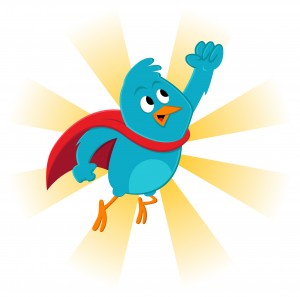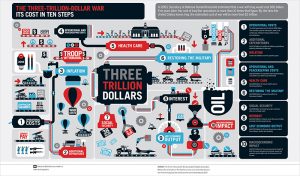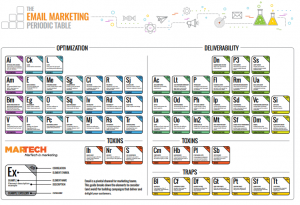How do you make the most of your social influencers? Columnist Blaise Lucey explains how to craft a successful influencer marketing strategy and increase sales.

First things first. We all know “influencer” is a goofy term. It’s probably second in overused buzzwords, right after “thought leader.” Whose thoughts are being led? Are we saying that person leads a thought? Could an inanimate object, like a painting or brick be a “thought leader” if it provokes a new and exciting thought?
Influencers are your friends. They’re your customers, your peers, your partners, your affiliates, your own employees. Anyone who has something nice to say or interesting to showcase about your company is an influencer.
Influencer marketing shows that your brand is a trusted and respected leader in your space, whether you’re a B2B SaaS (Software as a Service) company, a medical device manufacturer or an auto shop. And you don’t need to have Kardashian-level influencers (and paychecks) to build a great influencer marketing program.
On average, influencer marketing returns $6.85 for every dollar. And it costs next to nothing to get started.
Here are six quick steps to create great campaigns that build your industry relationships and boost sales.
1. Come up with an enticing idea
Before you start pitching influencers, think about what’s in it for them. A lot of experts are more than willing to give you a quote, especially if you have a built-in social following or a lot of web traffic. If not, think about free services you can offer in return.
If the influencer is another business, think about co-marketing initiatives you can create that target the same audience (live events, webinars, guides and podcasts are all great collaboration opportunities. For example, the team here at Bitly teams up with industry peers. For instance, we partnered with Buffer to host a webinar about social media design tips).
Just about everyone is interested in building their personal brand. How will their contribution help you and help them? Influencer marketing is hinged on that exchange.
2. Find your influencers and get in touch
Once you have your idea, it’s time to find your influencers. Not sure where to start? Look up relevant industry hashtags on Instagram or Twitter and follow up with people who seem to have a big presence in your space.
If you already have an influencer or partner in mind, try connecting through:
- LinkedIn;
- Twitter;
- Instagram;
- Facebook; and
- personal websites.
The alternative is to seek out community groups that are full of relevant influencers and build relationships there, like:
- Slack groups (for example, Dave Gerhardt over at Drift started a “Tech in Boston” group that attracted hundreds of members);
- LinkedIn groups;
- Facebook groups; and
- forums on Reddit.
Still scratching your head? Use Help A Reporter Out (“HARO”) and send out a query asking for advice about a particular industry topic. That’s a great way to connect with experts in any field, make connections and get compelling quotes. We’ve used HARO for everything from an e-book about how people use Bitly to predictions for social media in 2016.
3. Feature customers & use cases everywhere
At Bitly, we know that our free users are doing a lot of interesting and creative things with our tool, so we started reaching out to them. A lot of the time, we’ll just search Twitter for people who are doing cool things with Bitlinks, and we’ll tweet at them to see if they’re interested in contributing their insights to our blog.
That way, we get really cool use cases and build a community — all in one! Our latest use case talked about how charity:water used Bitly to track video engagement.
If you can’t get customers to sign off for testimonials, think about influencers who are doing similar things in the industry. Is there someone who could teach your customers about your product — without selling it? Find influencers who can create genuinely helpful content, and your audience will respond.
4. Once you have influencers, hang onto them
Too often, brands will collaborate with partners, industry leaders or influencers and then abandon the relationship after the project or campaign runs its course.
After your first project, think about new ways you can engage with influencers. The bigger your community, the more successful your future marketing campaigns will be.
So how do you stay in touch? Aside from email, create a broader channel for influencers to collaborate and stay in touch for future campaigns, including:
- LinkedIn groups;
- Facebook groups;
- Facebook pages;
- Slack groups; and
- Email newsletters (with relevant influencer opportunities).
5. Launch an influencer loyalty program
Did an influencer contribute to a blog post in the past? Did she host an Instagram takeover that did really well?
You should show your appreciation for those efforts down the road. With a lasting community of influencers, you can coordinate loyalty programs that ensure influencers stay up-to-date with your latest products and services.
Just as loyal customers are far more valuable than new ones, an influencer who’s already familiar with the brand can turn into an advocate for the business. This is especially handy for content marketing — a use case, testimonial or expert insight makes a piece that much stronger. With loyal influencers, all of that content is just an email away.
6. Share, share, share!
The best part about working with influencers is that you automatically have someone who’s going to share the content when it’s published. Not only that, if the influencer has a big following, he or she will share it with them, too.
If you’re working with a partner, make sure that you coordinate sharing across social channels in the weeks and days leading up to the campaign. Any time a piece of content features an influencer, don’t forget to include their social handles when you run the promotions.
Once you’ve established a social dialogue with your influencers, you can turn that into a longer conversation that’s fun and engaging for your fans and followers on any channel. There are plenty of creative opportunities when you have a well-known industry figure who starts discussing the trends relevant to your customers and your business.
The power of the ask
Social channels have made it extremely easy for brands to get in touch with relevant influencers, but that doesn’t mean it’s the only place to build those relationships. If you meet someone at an event and he or she is doing something interesting in the industry, ask if they’d like to be featured on your website or blog. Have a happy customer or employee? Just ask.
The foundation of influencer marketing is relationships. The more influencer content you create, the more human your brand becomes. And it all starts with one simple thing: asking influencers if they want to work with you.
Some opinions expressed in this article may be those of a guest author and not necessarily Marketing Land. Staff authors are listed here.
Marketing Land – Internet Marketing News, Strategies & Tips
(67)
Report Post








